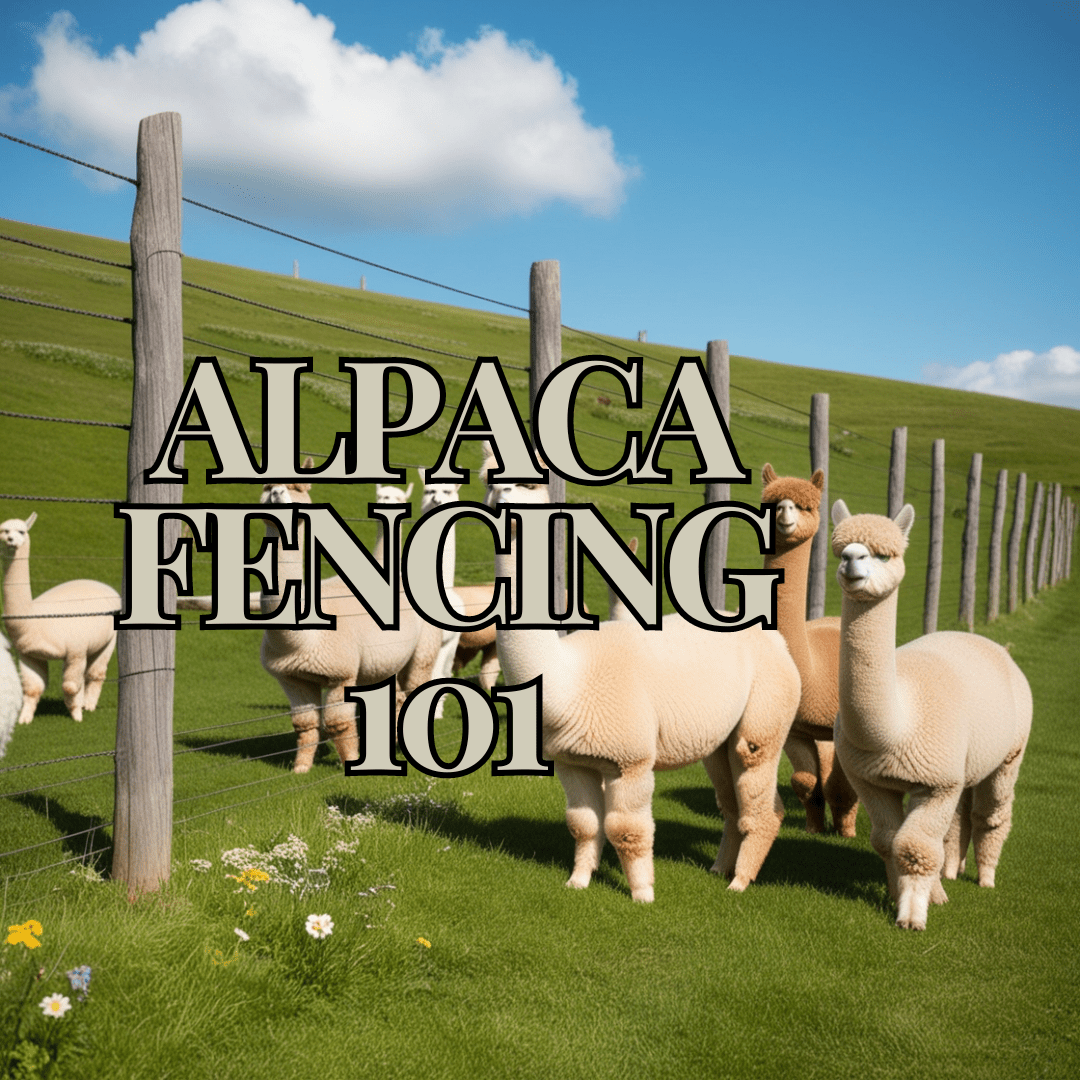Alpaca Fencing 101: The Best Options for Keeping Your Herd Safe
Choosing the right fencing for your alpaca farm is critical for both the safety and well-being of your herd. Alpacas are docile animals, but they still require secure fencing to protect them from predators and prevent escapes. This guide explores the best fencing options, factoring in durability, cost, and ease of installation.
Why Is Fencing Important for Alpacas?
Alpacas need protection from various threats like predators and environmental hazards outside their enclosure. A sturdy and well-maintained fence serves three primary purposes:
- Predator Protection: Predators like coyotes, dogs, and even large birds can pose a significant threat to alpacas. Proper fencing acts as a physical barrier to these dangers.
- Herd Containment: Even calm alpacas can become curious or startled, leading them to wander if fences are inadequate.
- Pasture Management: Fencing helps you create rotational grazing systems, essential for maintaining healthy pastures and reducing parasite load.

Types of Fencing for Alpacas
There are several fencing options suitable for alpacas, ranging from traditional wooden fences to modern electric options. Here’s a breakdown of the most popular choices:
1. Woven Wire Fencing
Woven wire is one of the most commonly used types of fencing for alpacas due to its durability and effectiveness. The wires are woven into a mesh pattern, creating a strong barrier that’s difficult for alpacas to break through.
- Height: 5-6 feet is recommended to prevent jumping.
- Spacing: Ensure the wire openings are no larger than 2×4 inches to prevent heads or legs from getting stuck.
- Cost: Moderate – Woven wire is more expensive than electric fencing but lasts longer with minimal maintenance.
2. Electric Fencing
Electric fencing can be a cost-effective option, especially when used as an additional barrier on top of other fencing types. It’s particularly useful for deterring predators.
- Setup: A low-maintenance solution when combined with wooden or woven wire fencing.
- Voltage: Ensure the voltage is safe for alpacas but high enough to deter predators (around 4,000-5,000 volts).
- Cost: Low to moderate – Initial costs are lower, but maintenance and electricity add ongoing expenses.
3. Wooden Rail Fencing
Wooden rail fences are aesthetically pleasing and sturdy, making them a popular choice for many alpaca farms. However, they require more maintenance compared to other options.
- Durability: High-quality wood can last a long time but is susceptible to rot and requires regular maintenance.
- Safety: Ensure rails are close enough together (no more than 10 inches apart) to prevent alpacas from slipping through.
- Cost: High – Wooden fences are more expensive, especially when considering long-term upkeep.
4. High-Tensile Wire Fencing
High-tensile wire is a durable and flexible fencing option that’s effective for larger pastures. This type of fence is less about containment and more about establishing boundaries, as it’s usually used alongside electric fencing.
- Strength: The tension in the wires creates a strong barrier that can withstand pressure from animals.
- Installation: Requires professional setup due to the tensioning process.
- Cost: Moderate – Installation costs are higher, but the material itself is relatively affordable.
| Fencing Type | Durability | Cost | Maintenance | Predator Protection |
|---|---|---|---|---|
| Woven Wire | High | Moderate | Low | Good |
| Electric | Moderate | Low | Moderate | Excellent |
| Wooden Rail | High | High | High | Moderate |
| High-Tensile Wire | High | Moderate | Low | Good (with electric) |
Safety Considerations for Alpaca Fencing
When selecting fencing, it’s important to consider these key safety factors:
- No Sharp Edges: Ensure the fence has no sharp edges or protruding nails that could injure the alpacas.
- Secure Grounding: Proper grounding is essential with electric fences to avoid accidental shocks.
- Visibility: Alpacas need to see the fence clearly. Adding visible tape or markers helps prevent them from running into it.
Cost-Effective Fencing Solutions for New Owners
For those new to alpaca farming, starting with a budget-friendly option is often the best approach. Here’s how you can save on fencing:
- Combination Fencing: Use woven wire with a single strand of electric wire on top for a balance of cost and effectiveness.
- Rotational Setup: Fence off smaller areas and rotate your alpacas through them. This reduces the total fencing needed initially.
- DIY Installation: If you have basic construction skills, consider installing the fence yourself. Renting specialized tools can save on professional installation costs.
Conclusion: Choosing the Right Fencing for Your Alpaca Herd
Selecting the right fencing depends on your specific needs, budget, and environment. While woven wire remains the most popular choice for its balance of safety and durability, electric fencing and wooden rail fences are also effective options. By considering the factors outlined above, you can set up a secure and functional alpaca pasture that keeps your herd safe and healthy.
For more details on fencing options, check out this article on Livestock Blog and learn more about fencing for various livestock on Wikipedia.
